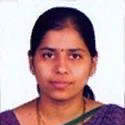
Swati P. Baviskar
Work place: Government College of Engineering, Aurangabad, 431005, India
E-mail: swatiujgare@gmail.com
Website:
Research Interests: Image Processing, Image Manipulation, Image Compression, Computer Architecture and Organization, Computer Vision
Biography
Ms. Swati P Baviskar: is from Maharashtra, India and was born on 12th January 1983. She earned her Bachelor’s degree in Computer Engineering from Pune University, Maharashtra, India, in July 2005. She completed her Master degree in Computer Science Engineering with second rank from an Autonomous Institute “Government College of Engineering, Aurangabad” in August 2011. She was Senior Software Analyst in S3 Technology Pvt Ltd. Pune from September 2005 to October 2008. Ms. Swati was associated with Gokhale College of Engineering Nashik, People’s Education Society’s College of Engineering Aurangabad and K. K. Wagh College of Engineering Nashik in Maharashtra from June 2010 to November 2015. Since July 2008 to August 2012 she was a research scholar at the Government College of Engineering, Aurangabad India and involved in the research activity. She had published a research paper entitled “Object Recognition using Mean Shift Analysis for Smart Camera Application” in International Journal of Computer Application March 2012 issue, which received high citation. Her research interests include Computer Vision, Digital Image Processing, High Performance Computing and Software Testing Techniques. Ms. Swati Baviskar is life member of Indian Society for Technical Education and Computer Society of India.
Author Articles
An Efficient Object Search in Video Using Template Matching
By Nitin S. Ujgare Swati P. Baviskar
DOI: https://doi.org/10.5815/ijigsp.2019.03.02, Pub. Date: 8 Mar. 2019
This research paper presents a novel approach for object instance search in video. At the inception, video is selected for which the object instance within the desired video is to be searched and given as an input to system. In preprocessing step, video is divided into key frames. In next step, features are extracted from query image and using template matching algorithm it is compared with key frames. If the object is present in frame then it will display detected object. Similarly, all the frames in video which contains the object are displayed. Max Path Search algorithm is used to remove the noise against classifier and Spatio-Temporal trajectories are used to improve object search. We encountered the fundamental challenge to detect an object from a set of key frames of a video with a partial appearance of object due to lighting, positioning, occlusion etc. from a known class such as logo and any other. The goal of proposed method is to detect all instances of object from known class.
[...] Read more.Other Articles
Subscribe to receive issue release notifications and newsletters from MECS Press journals